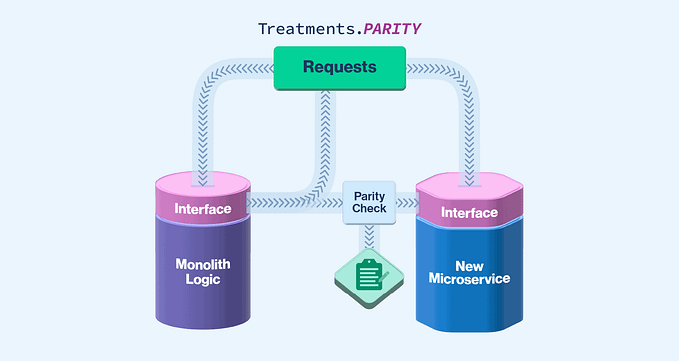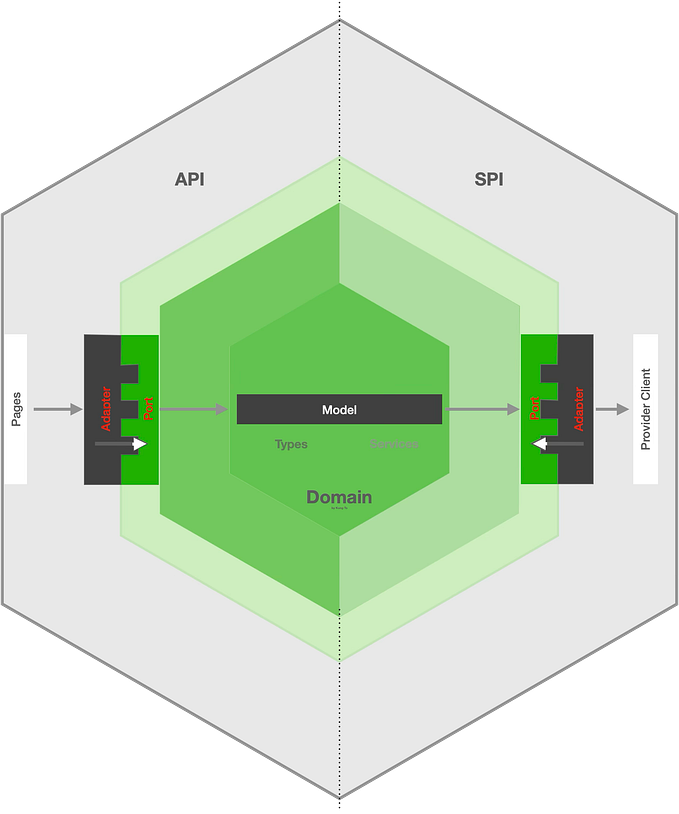Reinforcing Quality: Strategically Integrating Tests into Your Architecture
In our previous article, “The True Impact of Microservices: Insights into Modern Service Architectures”, we delved into the nuances of microservices. Today, we shift our focus to an often overlooked yet fundamental aspect of software development: integrating tests into the very fabric of your system’s architecture. We have touched upon testing strategies before in our series, specifically in “The Art of Mobile Testing: Strategies for Success”, but this time, we will explore how tests can be embedded within the architecture itself to enhance system quality and stability.

Tests should not be mere afterthoughts or peripheral activities. They need to be embedded within the architecture, ensuring they are an integral part of the development process. This integration transforms tests from simple bug catchers to key components that enhance the stability and quality of your codebase.
Unit tests validate individual functions, integration tests ensure components work together, and acceptance tests confirm that the system meets business requirements. Recognizing and utilizing the full spectrum of tests helps create a resilient and adaptable system.
In this article, we’ll explore how to make tests an essential part of your architecture, ensuring they support rather than hinder development. Let’s dive into the practical steps and strategies to seamlessly integrate tests, making your system robust and flexible enough to handle future challenges.
Tests as System Components
Integration of Tests into the Architecture
Tests are an essential part of any software system’s architecture, playing a key role in verifying and maintaining code quality. Rather than being added as an afterthought, they should be integrated into the system from the very beginning. This approach ensures that tests are aligned with the system’s design principles and can effectively validate its functionality.
Incorporating tests into the architecture involves designing the system with testability in mind. This means creating clear interfaces and maintaining a separation of concerns, allowing tests to interact with the system in a straightforward and consistent manner. This strategy helps ensure that tests accurately reflect the system’s behavior without becoming tightly coupled to its implementation details.
Benefits of Test Independence
Treating tests as independent components offers significant advantages. It allows tests to be executed in isolated environments, providing a controlled setting to verify the system’s behavior under various conditions. This separation ensures that tests can be modified, added, or removed without affecting the production system, minimizing the risk of introducing errors into the live environment.
Keeping tests separate from the main system enhances their reliability and effectiveness. By running tests in dedicated environments, developers can experiment and identify issues without impacting end users. This isolation is achieved by ensuring that test code does not depend on the volatile aspects of the system, such as the user interface or external dependencies.
Designing for Testability
Avoiding Fragile Tests
When tests are tightly coupled to the system’s implementation, even minor changes can cause numerous tests to fail. This tight coupling makes the system rigid and less adaptable to changes, as developers may hesitate to make necessary modifications due to the fear of breaking existing tests. Fragile tests, which depend heavily on specific details of the system, can significantly slow down development and reduce the flexibility of the system.
Fragile tests often lead to a situation where the development team spends a disproportionate amount of time maintaining the test suite rather than improving the system itself. This maintenance overhead can become a bottleneck, making it difficult to introduce new features or refactor the code.
Solutions for Reducing Test Dependency on Specific Components
To avoid the pitfalls of fragile tests, it’s essential to decouple tests from the specific components they test. One effective strategy is to use abstractions and interfaces that allow tests to interact with the system in a more generalized way. This decoupling can be achieved by:
- Using Mock Objects: Replace actual dependencies with mock objects that simulate the behavior of real components. This allows tests to focus on the functionality being tested without relying on the actual implementation details.
- Dependency Injection: By injecting dependencies rather than hardcoding them, tests can easily substitute real components with mock or stub versions. This flexibility helps to isolate the code under test and reduce the impact of changes in other parts of the system.
- Design Patterns: Implement design patterns such as the Repository or Service Locator patterns, which provide a level of abstraction between the system and its dependencies, making it easier to manage and test those dependencies.
Creating a Testing API

Purpose of a Testing API
A Testing API provides a dedicated interface for tests to interact with the system, bypassing many of the complexities and dependencies that can make tests fragile. This API is designed to expose the essential functions needed for testing while hiding the implementation details. It allows tests to set up, execute, and verify system states without relying on the system’s UI or other volatile components.
Functions of a Testing API
A well-designed Testing API can include functions that bypass security constraints, avoiding the need for tests to deal with authentication and authorization mechanisms. This makes it easier to test business logic directly. Additionally, the API can provide mechanisms to bypass expensive or time-consuming resources such as databases, instead using in-memory stores or mock services to simulate these components.
Another critical function of the Testing API is to allow tests to set the system into specific states necessary for testing. This might include setting up mock data, configuring system parameters, or initializing components to known states. By controlling these aspects through the Testing API, tests can be made more reliable and repeatable, ensuring consistent results across different environments and executions.
Structural Separation and Security

Structural Separation
A well-designed Testing API abstracts the underlying structure of the application, enabling tests to interact with the system without needing to understand its internal architecture. This abstraction maintains the flexibility of the codebase. By concealing the structure, the API ensures that changes in implementation do not necessitate modifications to the tests, preventing them from becoming fragile and hard to maintain.
For example, if a service in the application alters its internal workings but retains the same external interface, the tests can continue to validate the functionality without modification. This level of abstraction is achieved through well-defined interfaces and adherence to principles like Dependency Inversion, ensuring that high-level modules remain unaffected by changes in lower-level modules.
Ensuring Security
Introducing a Testing API carries potential security risks, especially if it includes functionalities that bypass normal security measures or interact directly with the system’s internals. If these capabilities were accidentally exposed in a production environment, they could be exploited, leading to significant security breaches.
To mitigate these risks, it is essential to keep the Testing API strictly separate from the production API. This separation can be enforced through several practices:
- Access Control: Ensure that the Testing API is only accessible in development and test environments. Implement strict access controls to prevent unauthorized access.
- Environment-Specific Configurations: Use configuration management to enable or disable the Testing API based on the environment. For instance, the API should be completely disabled in production.
- Code Review and Auditing: Regularly review the codebase to ensure that testing hooks are not exposed in production builds. Automated auditing tools can also help detect potential security issues.
By maintaining a clear boundary between testing and production environments, we can leverage the benefits of a robust Testing API without compromising the security of the production system.
The Role of Tests in Long-Term System Stability

Maintaining Tests
For tests to be effective over the long term, they must be kept current with the evolving codebase. This involves regularly reviewing and updating test cases to reflect changes in requirements, features, and system behavior. Reliable tests are essential for detecting regressions and ensuring that new changes do not introduce unexpected issues.
Neglecting test maintenance can lead to outdated or broken tests, which may provide false positives or negatives, undermining confidence in the test suite. Regularly scheduled test reviews and refactoring sessions can help keep the test suite aligned with the current state of the application.
Evolution of Tests and Code
As the application evolves, both the production code and the test code should be able to change independently while maintaining their respective roles. This independence is facilitated by the Testing API and proper architectural practices. By decoupling tests from specific implementations, developers can refactor and improve the production code without constantly modifying the test suite.
Similarly, as new testing methodologies and tools become available, the test suite can evolve to incorporate these advancements without requiring changes to the production code. This separation allows for continuous improvement in both testing practices and application architecture, leading to a more robust and adaptable system.
Conclusion
Tests are often the hidden champions of a robust software system, ensuring everything runs smoothly behind the scenes. Integrating them directly into your architecture transforms them from simple checks into powerful tools for maintaining code quality and system stability.
By embedding tests into the architecture from the start, we move beyond just error detection to creating a framework that supports ongoing development and flexibility. This approach makes your system more resilient to change, enabling it to evolve without compromising reliability.
We’ve explored how a Testing API can decouple tests from the application’s internal workings, making tests more reliable and easier to maintain. By keeping test environments separate from production, you can secure your application while ensuring that tests remain effective.
Maintaining up-to-date tests that can evolve independently from the production code is crucial for long-term stability. This strategy allows you to refactor and improve your system continuously, without the fear of breaking existing functionality.
As you apply these principles, consider how they can fit into your development practices. Share your thoughts and experiences in the comments below. If this article has been helpful, subscribe for more insights into building resilient, scalable software systems. Your engagement helps us continue bringing valuable content to the community.








